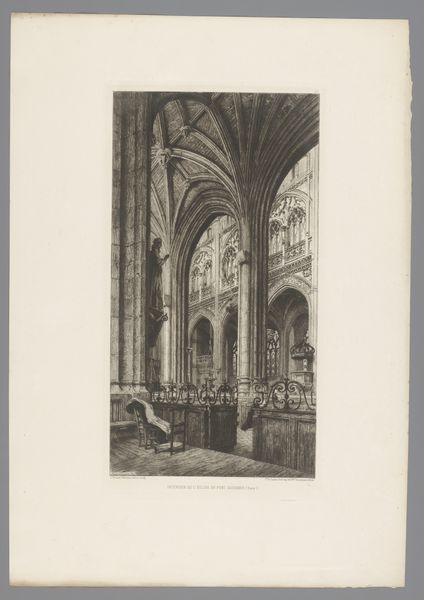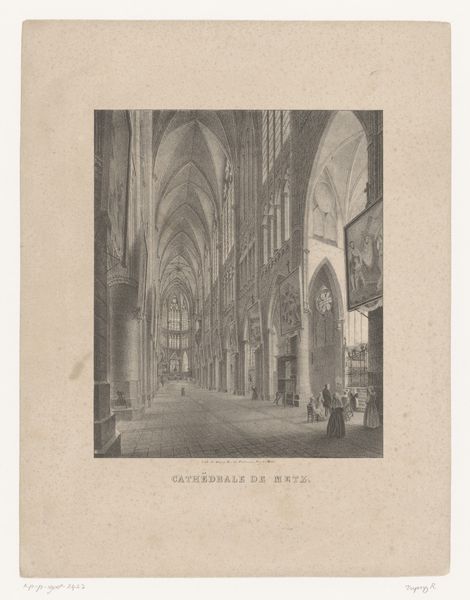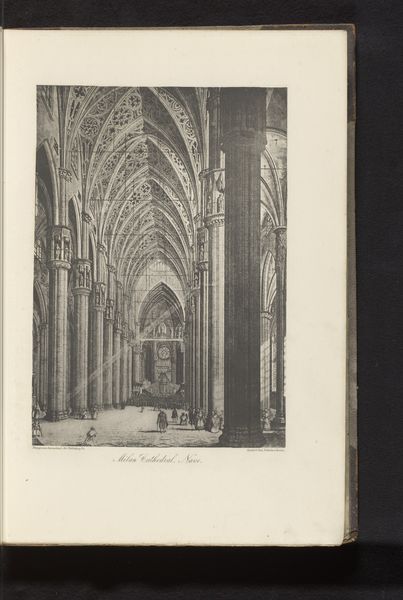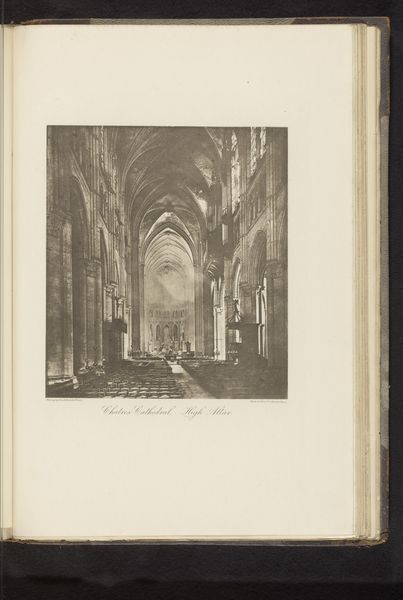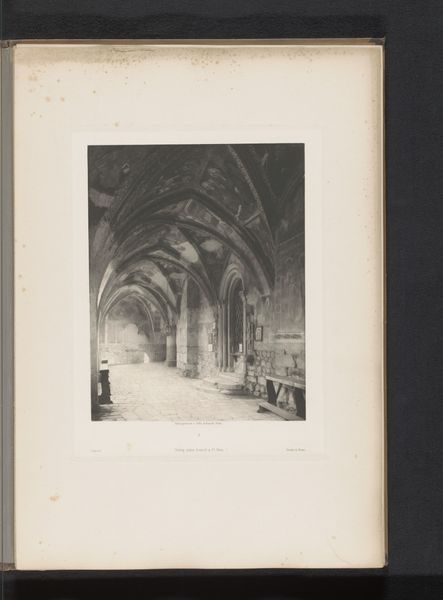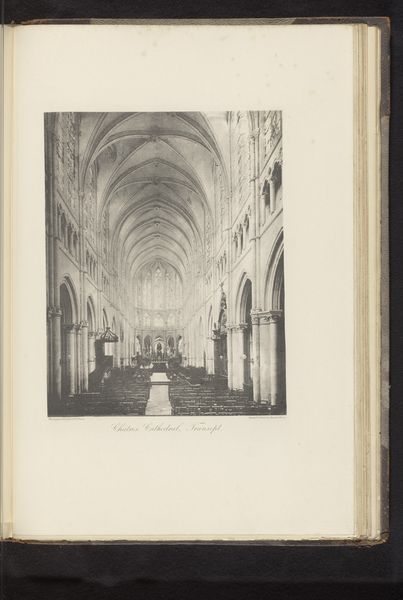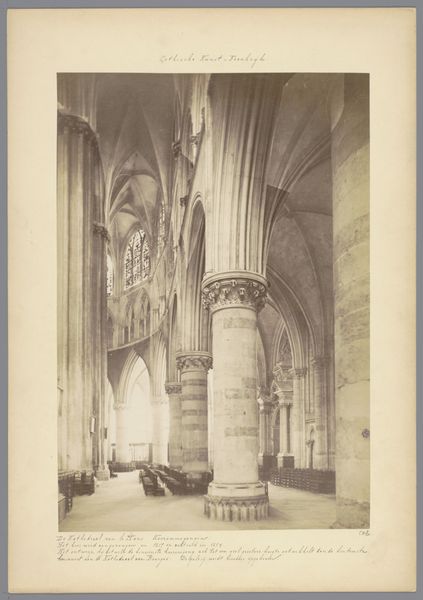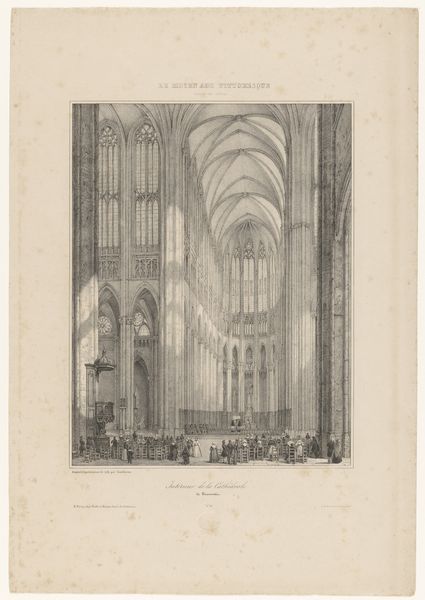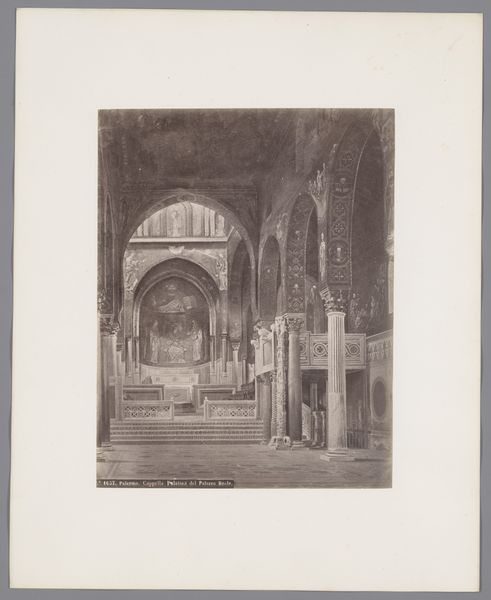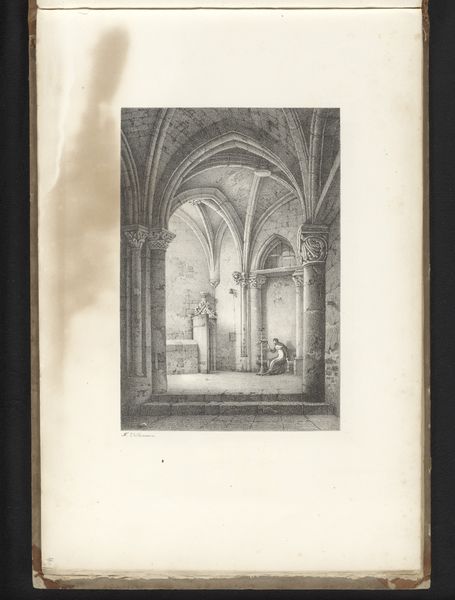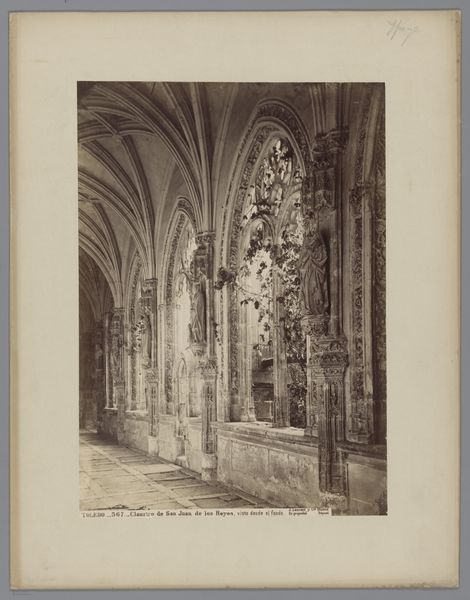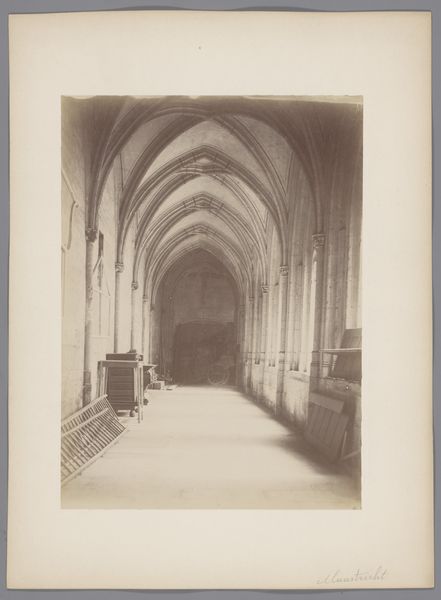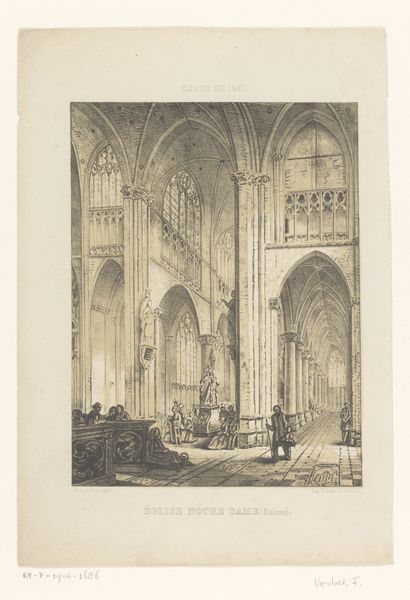
Fotoreproductie van een tekening voorstellende het interieur van de kathedraal van Milaan, Italië 1864 - 1881
0:00
0:00
drawing, print, photography
#
drawing
# print
#
landscape
#
photography
#
genre-painting
#
realism
Dimensions: height 471 mm, width 351 mm
Copyright: Rijks Museum: Open Domain
Editor: This is a photo reproduction of a drawing by Giacomo Brogi, created between 1864 and 1881, showing the interior of the Milan Cathedral. The level of detail is pretty remarkable; I'm wondering what makes this more than just a photograph? Curator: Well, it’s important to remember the layered processes at play here. We aren't just looking at the cathedral, but at an image of a drawing, captured through photography, and reproduced as a print. It reveals how architectural grandeur becomes a commodity. Consider the labor involved in creating that initial drawing and then re-presenting it through reproductive technologies. What impact might these multiple layers of mediation have? Editor: So, the 'reproduction' aspect changes everything. Instead of focusing on the artistic expression or the sacred space, we look at how the image itself is constructed and distributed? How would it differ from, say, an architectural drawing? Curator: Exactly. With mass reproduction, Brogi’s work circulates, creating access to architectural marvels like the Milan Cathedral. The image's value isn't just in aesthetic experience anymore, but in its reproducibility, distribution and accessibility for an emerging tourist market. Think of the implications for consumption, class, and the very idea of “authenticity”. Editor: So, you're suggesting that by examining its materiality and mode of distribution, we can see this print as a reflection of its era’s economic and social landscape? Curator: Precisely. Understanding the print in its material reality gives insight to the artistic intentions, market needs and distribution channels. Editor: I see; the piece's true value lies in examining how art, labour, and industry intersected during that time. That's a totally different way to consider a drawing like this. Thanks! Curator: Indeed. It challenges us to rethink what we value and how it gains value.
Comments
No comments
Be the first to comment and join the conversation on the ultimate creative platform.
